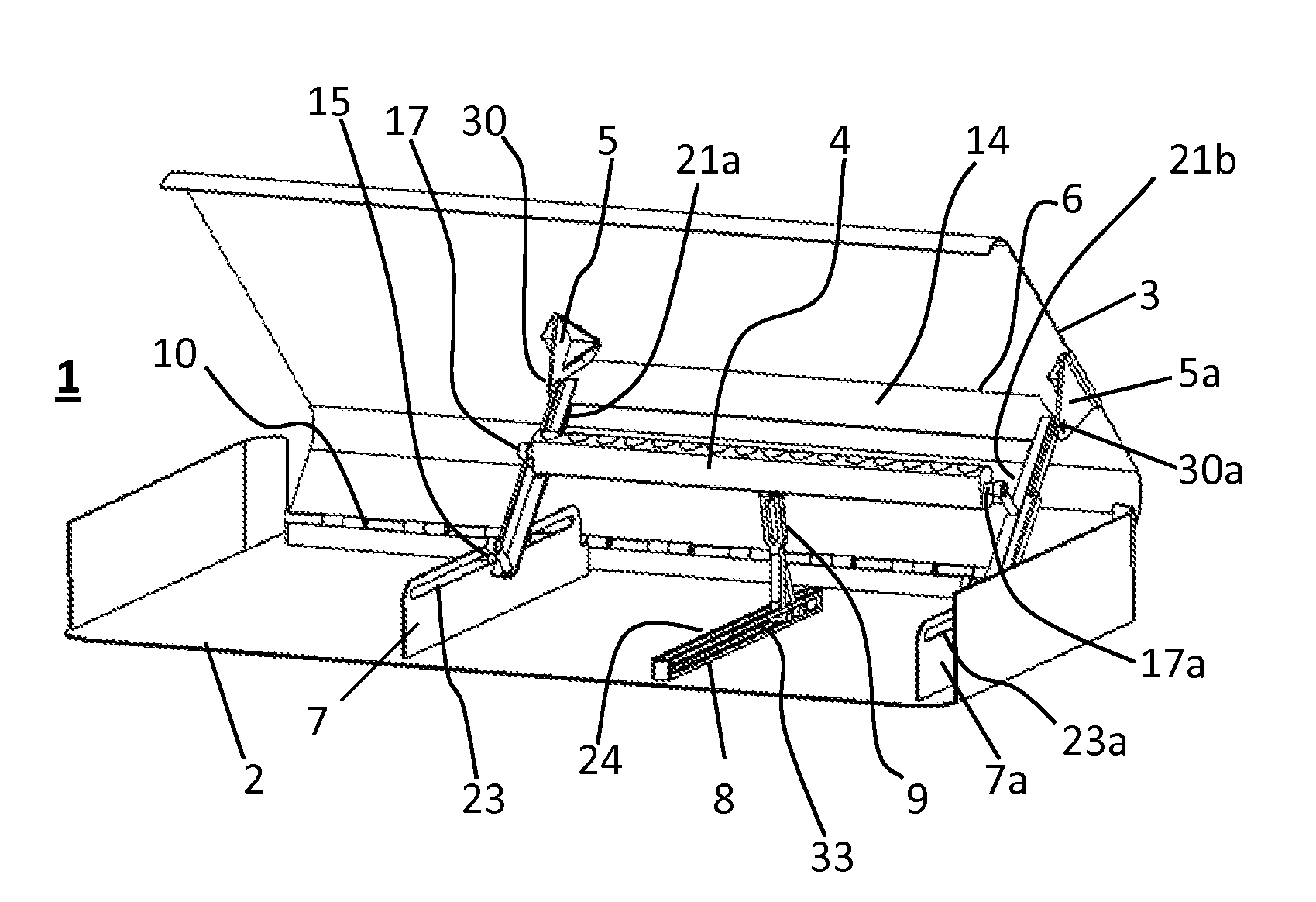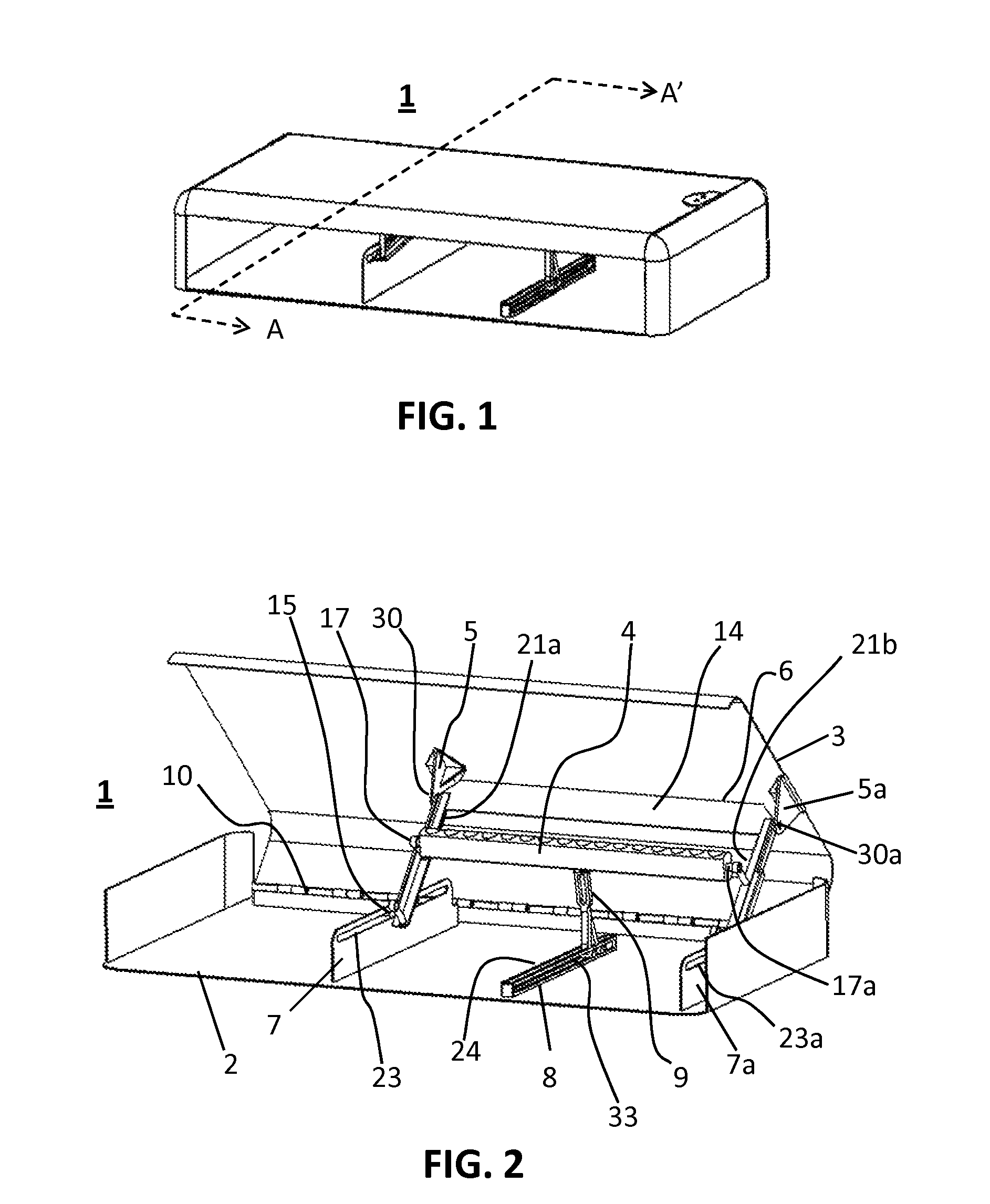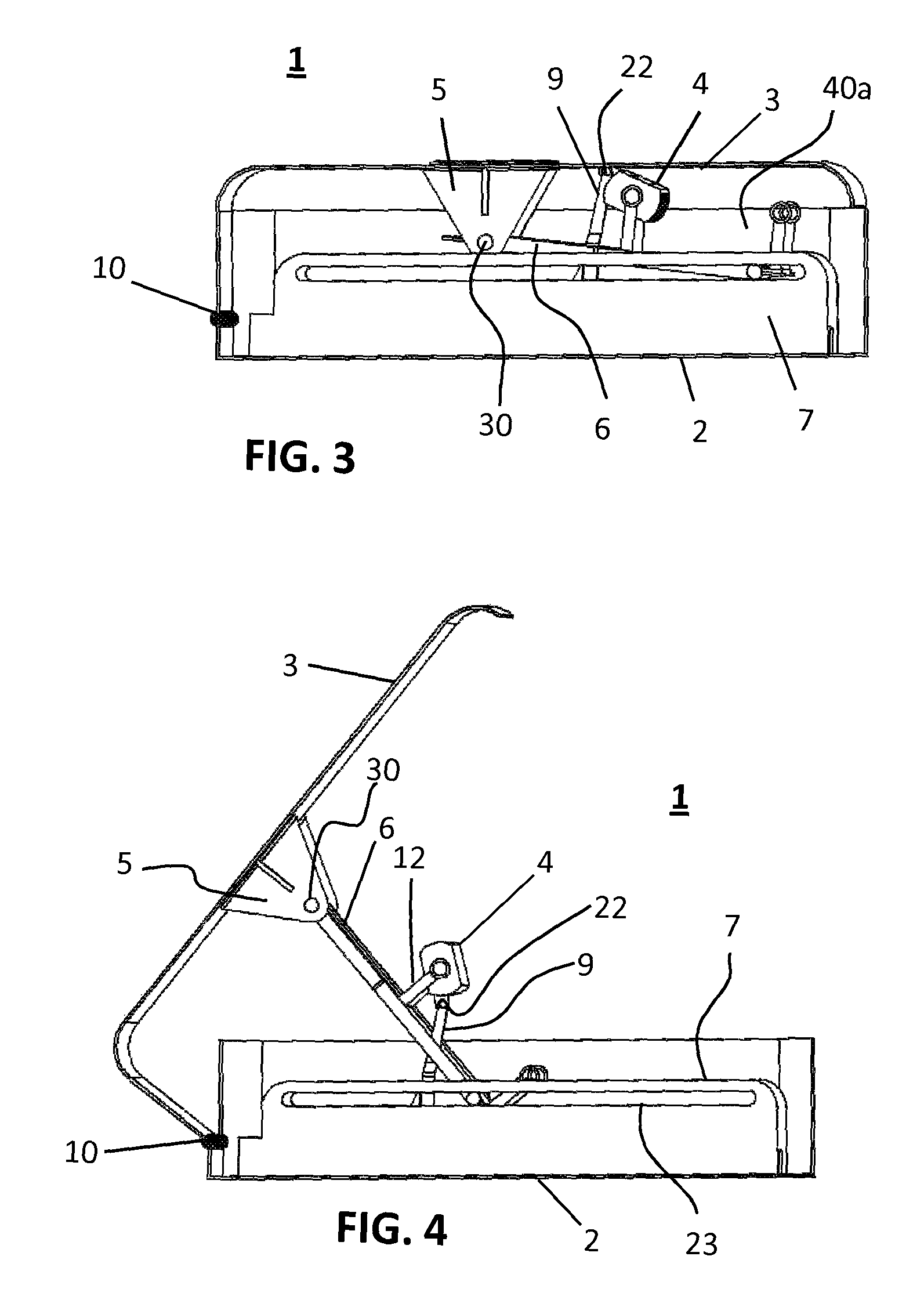Autoclavable medical instrument case for reduced instrument corrosion
a medical instrument and autoclavable technology, applied in the field of autoclavable medical instrument cases, can solve the problems of nevertheless corroding when exposed to water
- Summary
- Abstract
- Description
- Claims
- Application Information
AI Technical Summary
Benefits of technology
Problems solved by technology
Method used
Image
Examples
Embodiment Construction
[0016]Referring to FIGS. 1 through 4, the instrument case 1 has a rectangular body and comprises: tray 2, lid 3, instrument holding bracket 4, fastening tabs 5 and 5a, movable frame 6, fastening brackets 7 and 7a, fixed frame 8, and sliding link 9.
[0017]Referring to FIG. 6, tray 2 has a main body 35, fastening brackets 7 and 7a, and side walls 40 and 40a. The main body 35 is preferably rectangular but can alternatively be of another configuration, as long as the fastening brackets 7 and 7a, and side walls 40 and 40a are accommodated with clearance to perform their intended functions as described below, and as long as the configuration does not obstruct the movement of the lid 3, instrument holding bracket 4, movable frame 6, and sliding link 9 as described herein.
[0018]The side walls 40 and 40a (FIG. 6) are preferably rectangular, but can be of any configuration as long as they limit closure of the lid 3 and do not otherwise obstruct the movement of the lid 3, instrument holding bra...
PUM
 Login to view more
Login to view more Abstract
Description
Claims
Application Information
 Login to view more
Login to view more - R&D Engineer
- R&D Manager
- IP Professional
- Industry Leading Data Capabilities
- Powerful AI technology
- Patent DNA Extraction
Browse by: Latest US Patents, China's latest patents, Technical Efficacy Thesaurus, Application Domain, Technology Topic.
© 2024 PatSnap. All rights reserved.Legal|Privacy policy|Modern Slavery Act Transparency Statement|Sitemap



